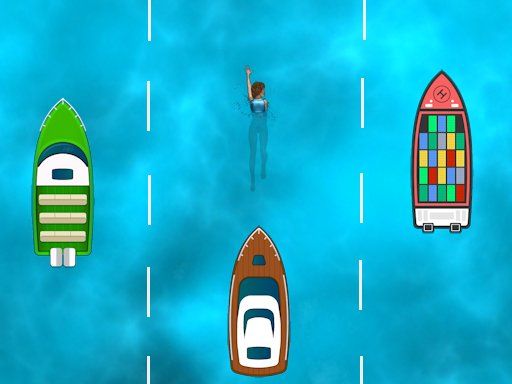
Summer Boating Adventures: How to Stay Safe and Have Fun on Crowded Waters
Taking your boat out on a gorgeous summer day is one of the best ways to unwind and enjoy nature. However, popular weather means you’re likely not the only one with this idea. Lakes, rivers, and coastal areas can quickly fill up with boats, swimmers, and watercraft of all kinds. Navigating these waters safely while still enjoying yourself takes more than just steering skills—it requires awareness, planning, and good etiquette.
This article guides you through key aspects of boating in busy summer conditions: from preparation and safety to etiquette and how to respond in emergency situations. Let’s set sail!
1. Preparing for a Busy Day on the Water
Before you even touch the throttle, preparation is essential. Begin by checking the weather forecast, fuel levels, safety equipment, and navigational tools. In crowded conditions, even minor mechanical issues can escalate into serious hazards.
A checklist can help you stay organized:
-
Life jackets for all passengers
-
Fire extinguisher
-
First aid kit
-
Sound signaling device (like a horn or whistle)
-
Navigation lights (especially important if you’re staying out till dusk)
Plan your route in advance. Many areas post real-time updates about traffic conditions on the water or known congested zones. This allows you to adjust your course or timing. It’s also smart to inform someone on shore about your expected return time.
Choosing less popular launch ramps or starting your day earlier than peak hours can dramatically improve your experience. Being among the first on the water allows you to enjoy peaceful cruising before the traffic builds.
2. Mastering Navigation in Congested Waters
Navigating through crowded waterways requires more than just knowing how to steer. It’s about reading the water like a traffic map—anticipating movement, maintaining proper distance, and adjusting speed accordingly.
Keep to the starboard (right) side of channels and be ready to yield when necessary. Always assume others may not see you or follow the same rules, especially when recreational boaters or rental users are involved. That’s where defensive boating comes into play—slow down in high-traffic zones, maintain a wide berth, and make your intentions clear with hand signals or sound alerts.
Use your mirrors and scan frequently. Swimmers, kayaks, paddleboards, and jet skis often occupy the same areas as boats, and they can change direction quickly. Avoid sudden movements, and always signal your turns.
When docking or maneuvering near the shore, reduce your wake. Excessive wake in tight quarters can cause collisions or damage other boats and docks. Slow is smooth, and smooth is safe.
3. Swimmer Awareness: Sharing the Water Responsibly
With warm weather, many people choose to swim in the same bodies of water that boats use. Swimmers may be hard to spot, especially when they’re not within designated swimming areas. This makes vigilance a top priority for boaters.
Keep your eyes open for splashing or colorful gear that may signal the presence of a swimmer. Areas near beaches, docks, or anchored boats are hotspots for swimming activity. If you’re unsure, slow down and scan carefully before proceeding.
Avoid boating too close to swim platforms or inflatables, as children often play there without adult oversight. Give a wide margin of space and reduce speed significantly in these zones.
Some modern boaters use propeller guards, which can help reduce injury in case of accidental contact. While not foolproof, they offer an added layer of safety.
By respecting shared space and maintaining full awareness, you help ensure everyone can enjoy the water safely.
4. Communication and Courtesy on the Water
Unlike roads, boating lacks streetlights or lane dividers, which makes clear communication vital. A friendly wave, a nod, or the use of your horn can signal your intentions, reducing confusion and avoiding unnecessary confrontations.
Maintain a calm and patient attitude. If another boat cuts you off or acts unpredictably, keep your cool. Escalating tensions only increases risk. Give space instead of reacting with frustration.
Avoid loud music near anchored boats or fishing areas. Noise pollution travels easily across water and can disrupt the peaceful experience others seek.
When passing slower vessels or kayakers, do so slowly and on the correct side. Avoid creating unnecessary wake that can capsize smaller craft or cause discomfort.
Mutual respect and good manners are the foundation of a positive boating culture. It’s not just about rules—it’s about creating a welcoming environment for all.
5. Recognizing and Responding to Emergencies
Even with careful planning, emergencies can happen. Mechanical failures, medical incidents, or accidents require quick, level-headed responses.
Carry a marine radio or ensure your phone is waterproof and fully charged. Emergency numbers, such as the local coast guard or water patrol, should be stored and accessible.
If you see someone in distress, approach cautiously and offer assistance without putting your own boat or passengers at risk. Throw flotation devices rather than diving in, unless absolutely necessary.
Know basic CPR and first aid, especially if children or elderly individuals are onboard. Training in water rescue or a boater safety course can make all the difference in a crisis.
Sometimes the best action is prevention—don’t overload your boat, ensure everyone wears life jackets, and stay within your limits as a captain.
6. Environmental Awareness While Boating
Crowded waters don’t only impact human safety—they can also take a toll on the environment. Anchoring in sensitive areas like coral beds or marshlands can cause long-term ecological damage.
Dispose of trash responsibly. Always bring a garbage bag and secure items that could blow overboard. Floating plastic or fuel spills harm both wildlife and aesthetics.
Avoid idling in shallow waters, which can stir up sediment and disrupt aquatic ecosystems. Choose designated anchoring areas when possible, and follow no-wake zones strictly near shorelines or bird habitats.
Leave the water better than you found it. Respecting the natural world ensures that future generations can enjoy the same boating pleasures we do today.
7. Post-Trip Wrap-Up: What to Do After Docking
Your responsibilities don’t end when the boat is tied up. A good wrap-up ensures you’re ready for your next trip and helps preserve your equipment.
Flush your engine with fresh water, especially if you’ve been in saltwater. Check for damage to the hull, ropes, or electronics. Refuel if needed, and take inventory of supplies.
Rinse and clean the boat thoroughly. Algae, barnacles, or mud left unchecked can cause long-term damage. Secure the boat properly, especially if weather is expected.
Most importantly, reflect on the day. What went well? What could you do differently next time? Boating is a skill, and each outing teaches you more about the water, your craft, and yourself.
Conclusion: The Joy of Respectful and Responsible Boating
There’s something magical about gliding across a calm lake or the open sea on a sunny day. But with that magic comes responsibility—not only for your own safety but also for the safety and enjoyment of others.
Being prepared, staying alert, and showing respect create a boating culture everyone can enjoy. Whether you’re navigating tight marinas or open bays, remember that your decisions affect more than just your passengers.
By following these principles, you’ll be able to make every summer boating adventure one to remember—for all the right reasons.






